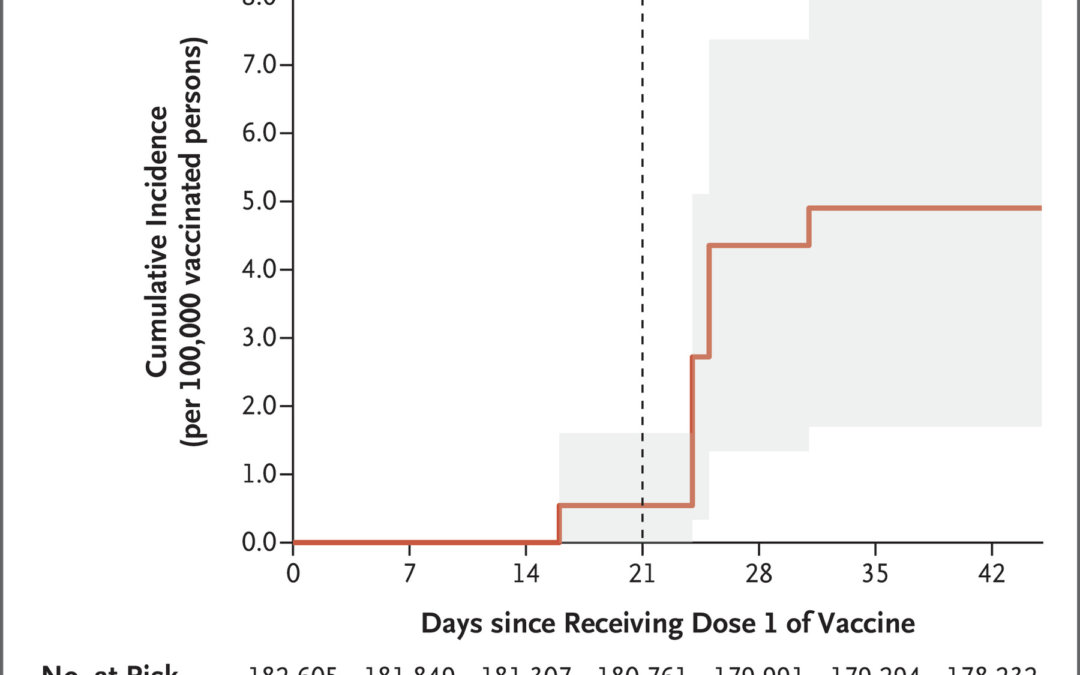October 26, 2022
In a letter to the editor, the authors stated that they previously reported on the incidence of myocarditis in Israel after receipt of the BNT162b2 messenger RNA vaccine (Pfizer–BioNTech) against coronavirus disease 2019 (Covid-19) to have been the highest amongst males between the ages of 16 and 29 years (10.7 cases per 100,000 persons). Since they reported this, the BNT162b2 vaccination has been approved for adolescents between the ages of 12 and 15 years. They then state that their initial evidence from this age group in Israel has also suggested a similar incidence and mild course of myocarditis, although their follow-up was limited to 30 days.
From their analyses, of 182,605 adolescents who had been vaccinated during this period, 20 potential cases of myocarditis were identified while a total of 9 cases were adjudicated as probable or definite myocarditis, using the case definition of the Centers for Disease Control and Prevention. Their findings translated to an incidence of 4.8 cases (95% confidence interval, 1.7 to 7.9) per 100,000 persons; 8 cases occurred after the second vaccine dose
In their supplementary appendix, the authors provided detail on study design and statistics. Their study combined a retrospective cohort study design to evaluate the incidence of myocarditis following the vaccine and a case series to characterize the positive cases. They identified suspected cases occurring within 42 days of the first dose of the vaccine in adolescents 12-15 years of age by searching for all matching international classification of disease 9 (ICD-9) diagnosis codes in each individual’s electronic medical records (EMR), including those recorded for patients with a known history of myocarditis. Also, they included all adolescents 12-15 who received at least one dose of vaccine between June 2nd 2021 and November 30th 2021. They reviewed EMR cases up to February 26th, 2022.
In order to estimate the incidence, they followed individuals until the earliest of an outcome event, 42 days post-vaccination, death from unrelated causes (in the latter two cases they were considered censored). The estimated the cumulative incidence of myocarditis by using 1 minus the non-parametric Kaplan-Meier method to calculate survival estimator, 42 days after the first vaccine dose, stratified by age and sex. Other than calculating various summary statistical measures for various variables in their study, the authors did not use any other statistical methods. Though they stated the Kaplan-Meyer (spelling) method was used, they did not properly explain how they calculated cumulative incidence using this method like the way I have stated just above in this same paragraph. All in all, there was no hypothesis testing/estimation done in this study so their use of methods are okay.
Written by,
Usha Govindarajulu
Keywords: COVID-19, vaccination, adolescents, myocarditis, incidence, Pfizer, BNT162b2, Israel
References
Witberg C. and others (October 19, 2022). “Myocarditis after BNT162b2 Vaccination in Israeli Adolescents”. NEJM: Correspondence. https://www.nejm.org/doi/full/10.1056/NEJMc2207270?query=featured_coronavirus
https://www.nejm.org/na101/home/literatum/publisher/mms/journals/content/nejm/0/nejm.ahead-of-print/nejmc2207270/20221019/images/img_xlarge/nejmc2207270_f1.jpeg
